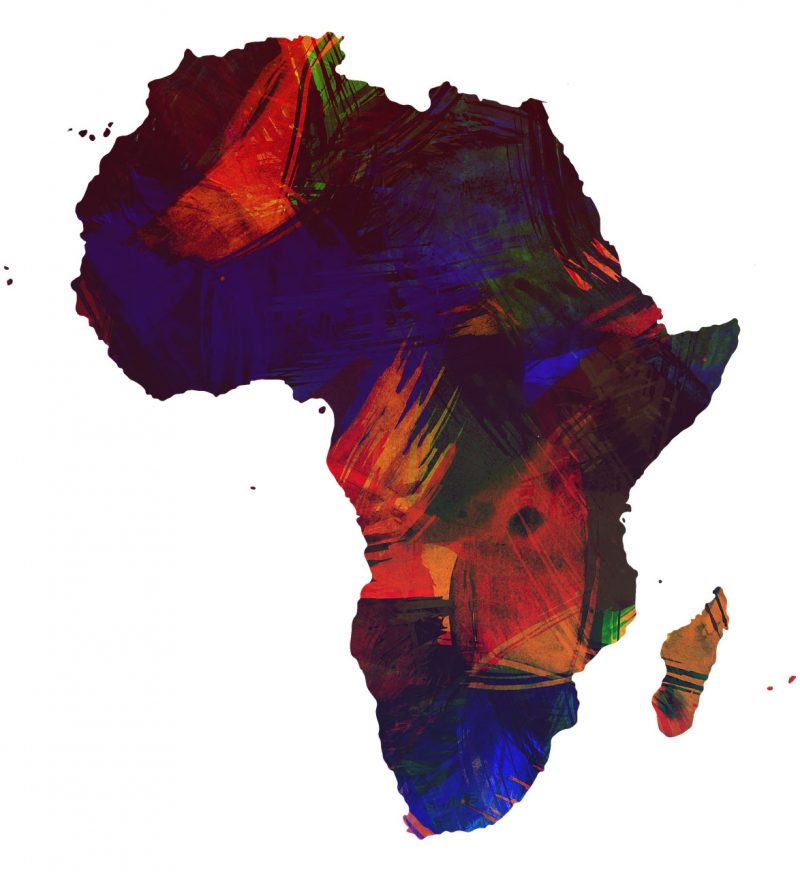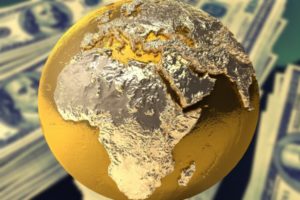
Importance of Africa has increased manifold in the current geopolitical climate. In particular, the three Asian economies China, Japan and India have adopted a more muscular approach, as the resource rich continent features high on their global agenda. Given the three countries are in competition for influence, both within Asia and beyond, they are keenly investing in Africa’s infrastructure, energy and development sectors, seeking growth as strategic partners and markets.
The Asian alignment for Africa comes at a time when the US has adopted a more isolationist approach and the African economies are bearing the brunt of commodity price fluctuations, given the resurrection of the nationalistic elements in the West. Africa now needs assistance and Asia will provide it— thereby, shifting the global strategic alignment.
However, when discussing Asia, its three largest economies are evidently seen competing for African attention, China through its grand expansionist policy of Belt and Road Initiative (BRI); and India and Japan in partnership, establishing Asia-Africa Growth Corridor (AAGC) for enhanced connectivity. Both the initiatives are focused on infrastructural and connectivity development aspect. However, AAGC is more people centered which has prioritized socio-economic development projects for agriculture, health, disaster management, pharmaceuticals and skill enhancement. While lacking a land corridor and a fat purse like that of China, Indo-Japanese project is set to leverage a sea corridor, touting it to be more cost effective and environmentally friendly with low carbon footprint.
AAGC has been designed in consultation with African leaders and policy makers, whose priority is to connect and integrate the economies of South Asia, South East Asia and Africa. While the AAGC began with clear focus on Africa, BRI or One Belt and One Road Initiative initially focused on the Eurasian Region and only in the last three years has China progressively made overtures to include African region. However, one cannot discount the 20 years of Chinese investment in Africa, which is outside this project. China is also a prime consumer of African commodities, with the 2017 African Economic Outlook highlighting China’s economic footprint in Africa— accounting for 27% of Africa’s total global exports and investments worth US$ 34 billion. Though in recent years Japan and India too have invested in Africa to the tune of US$30 billion, US$60 billion and US$10 billion, yet the combined figure is no match for China’s economic, infrastructural and trade dominance in the region. What also needs to be realized is that AAGC is still too nascent to challenge China’s position in Africa, especially when OBOR, the epitome of Chinese craftsmanship in policy making, is under full sway.
Furthermore, China has now stepped into the global leadership role and is championing the cause of globalization, aided by its $3 trillion One Belt and One Road Initiative, which comprises of Marine Silk Road and a new economic belt on land. In this context, Japan and India too have ramped up their efforts to expand their spheres of influence, which has amplified the geopolitical tensions. However, without the financial muscle to compete like that of China’s, both the countries are adopting alternative approaches with complementary economic and strategic agendas.

Africa: The Asian Playground
Africa indeed has now emerged as a playground for Asian powers, each vetting out its economic interests in the region and trying to expand its regional influence. In this regards, East Africa plays a pivotal role, owing to its strategic location to Asia. For instance, the $200 billion AAGC project which entails a sea corridor, will link Africa with India and other Southeast Asia and Oceania countries. Essentially, it will leverage the ancient sea routes and create new sea corridors linking ports in Jamnagar (Gujarat) with Djibouti in the Gulf of Aden and ports of Mombasa and Zanzibar to those of Madurai (Tamil Nadu); While Kolkata (West Bengal) will be linked to Myanmar’s Sittwe port.
In the meanwhile, China has already invested and built the continent’s first transnational $4 billion electric railway between Djibouti to Addis Ababa. Next, a Chinese firm has also financed a new railway in Kenya, which connects Nairobi to the country’s port city of Mombasa; with future plans to further reach out to Uganda, the Democratic Republic of Congo, and Rwanda.
Markedly, the investment strategies of the two Asian projects vastly differs. For the starters, China’s OBOR is more of state-led versus the Indo-Japanese project, which is mostly through the private sector. While China follows a typical ‘cash for infrastructure’ approach utilizing Africa’s vast mineral and energy fields, the AAGC aims for investment in soft infrastructural needs of skill development and sustainability. In fact, often China has been criticized for exploiting the continent’s rich resources— a criticism which is strongly voiced in Zambia and Angola. Careful of this, India and Japan have promoted AAGC as part of their “Open and Free Indo-Pacific Strategy”, concentrating on value creation by enhancing local productivity and resource development— thereby ensuring both quantity and quality, and fostering a mutually beneficial relationship with Africa for long term.
Significantly, India itself being a boiling pot of cultures, it has the experience of navigating through culturally complex, ethnically and linguistically diverse societies such as of Africa. Combine this with Japan’s technological know-how, we get a compelling partnership which can ably provide a counterweight to China. This provides Africa a huge opportunity to court foreign trade and investments as per their needs and catalyze its growth story. Clearly then a bouquet of competitive Asian investments can propel significant long term benefits for Africa across sectors, provided the nation-states are able to identify, prioritize and maximize their country’s economic interests with dexterity. Notably, they have a choice, not just amongst the Asian powers but also competing Western powers. The African States are then required to adopt an “economic diplomacy” just as the one adopted by Kenya in 2013, in order to find pragmatic solutions to issues related to foreign trade and investment cooperation.
Africa has evidently emerged as a chessboard for global influencers, and in particular for Asian powers who are keen to forge stronger alliances. There now exists a huge opportunity to create a triumphant situation for all involved nation-states (Asia or Africa), enabling them to achieve their domestic and international priorities. Africa’s ongoing development and Asia’s rise on the global platform reflects not only a power struggle of Asian nations but also of the power shift from West to East. Clearly Africa, is not a just a chessboard but rather the main stimulus and as well as the catalyst in this biggest trade-off of 21st century, thereby inducing a change in balance-of-powers for near future.
A version of this article was earlier published in Geopolitical Monitor.